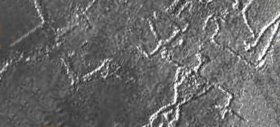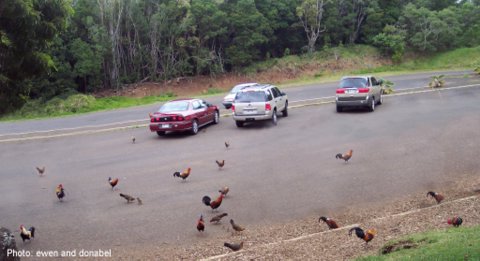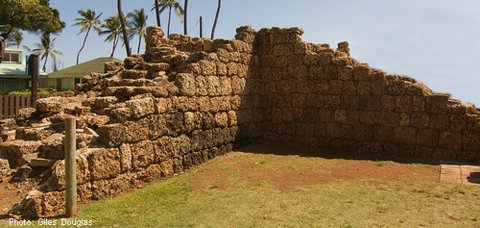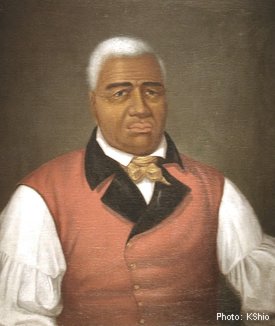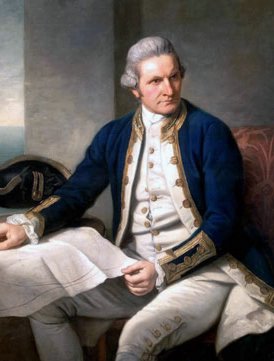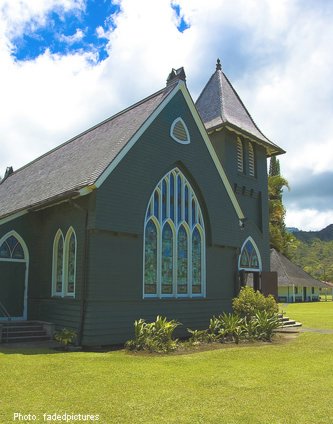|
My version of the history of Hawaii -
|
|||||||
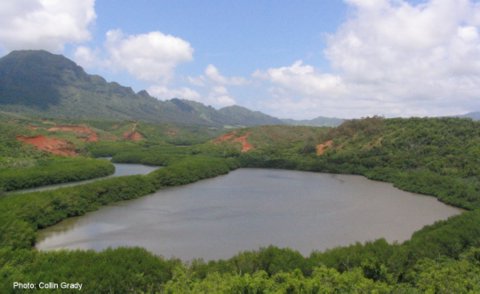 Menehune fish pond |
So...the Menehune legends (and purported structures) exist, but the first "settlers" recorded are the Marquesans from Polynesia that land on Kauai around 400 A.D. Guess who comes next? That's right...TOURISTS!
The history of Hawaii shows that visitors from the Marquesas, Tahiti, Samoa, and other South Pacific islands started coming to Kauai as early as 500 A.D. - I would guess that resort accommodations have improved a lot since then! (Except maybe at the Koke'e Lodge!)
These immigrants and their visitors from Polynesia bring with them many new plants and animals. Chickens, dogs, rats, pigs, and banana and coconut trees are just some of the things they introduce into Kauai's ecosystem...
...obviously, the freaking chickens did just fine! You can see (and hear) LOTS of them running around the island!
Where were we? Oh yeah, Kauai history....so, it's 400 A.D...the Marquesans rule, and generally enjoy the heck out of the beauty and solitude of Kauai until around 1000 A.D. That's when some Tahitians happen by, like what they see, and promptly thump the Marqeusans and take control of the island...
...the society that emerges is deeply immersed in spirituality. In the history of Hawaii, there were hundreds, if not thousands of gods that were felt to be overlooking all aspects of Kauai life.
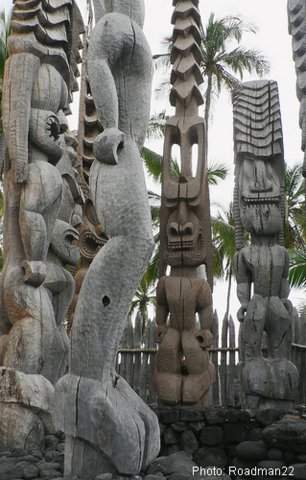 Tiki carvings |
The society is governed by a "kapu" system, the "kapu" being acts or places that are restricted or forbidden...
...these "kapu" range from not having your head ever be higher than the king's, to not eating certain foods, to not having contact with women, to not fishing certain areas...
...although incredibly restrictive, the kapu system is also responsible for the amazingly insightful Hawaiian way of preserving and respecting the aina (land) and other people.
The Kauai people have the utmost respect for both the land and the sea, and throughout the history of Hawaii, Earth and sea are always carefully nurtured, never too many fish taken, or too much land cultivated. Balance and harmony, both physically and spiritually are principles to live by.
They design and build the irrigation system of canals and ditches that still wind throughout Kauai, to support their staple agricultural product-taro. The taro is then pounded into poi, which is their staple FOOD product!

Stone-working is at an advanced level as well, as you can tell from the ruins and remnants of the large temples and altars built to honor all those hundreds of gods of the time... ...they also bring with them enough farming and engineering technology to keep them from having to turn to outside sources for anything, thus, even as their population grows, the history of Hawaii, and especially Kauai, over the next 800 years or so records near total isolation... ...in fact, today Hawaii is still the most remote occupied land on the planet, over 2400 miles from the nearest continent!
And because it is remote even from the other islands, Kauai was long seen as a "separate" island or kingdom, and when King Kamehameha began uniting the Hawaiian Islands in the late 1700's, Kauai was the only island able to resist Kamehameha's force... ...until finally, in 1810, after repeated threats and having watched the brutality brought upon the other islands, King Kaumualii, then ruler of Kauai, voluntarily cedes Kauai to Kamehameha to avoid further fighting and bloodshed.
...arriving with two huge sailing ships, he sets anchor in Waimea Bay and first steps foot on Hawaiian soil on Kauai in 1778... ...he leaves to further explore the Pacific, and then returns again to the Big Island of Hawaii in 1779. A short time after his return, Cook is killed during an altercation over a small boat on the north shore of Kealakekua Bay on the Big Island. Nevertheless, Cook's arrival marks the beginning of great change for Kauai history, and for all the history of Hawaii. Unfortunately, another of the most notable "new" things brought to the Islands from the western world is disease. You might not have heard much about this unpleasant part of the history of Hawaii, but western diseases like typhoid, measles, venereal diseases and the flu would decimate nearly 80% of the native population over the next century. 80%!! And you thought there were a lot of us Asian folks there NOW!! So...after uniting the islands, King Kamehameha I dies in 1819, and his body is still pretty much warm when his queen, Ka'ahumanu, persuades the new king, King Kamehameha II, to end the "kapu" system that has governed the islands for centuries. This huge concession to western thinking makes Kauai and it's people ripe for... ...the missionaries, the same ones who brought reading and writing to Hawaii. Coming from Boston, they land on Kauai in 1820, and basically hit the religious jackpot...an entire island of people who have just had their spiritual foundation stripped away from them!
The missionaries convert Kamehameha II and Ka'ahumanu to Christianity, and seeing a golden opportunity, quickly destroy many of the heiau and sacred sites on the islands, erecting churches in their place... ...and then, when Kapiolani the High Priestess publicly proclaims Jehovah as her god, and Pele the Goddess of Fire doesn't immediately cover her with hot lava, many Hawaiians convert as well! The missionaries also bring with them their families, and it is their children who really change the face of Kauai and the history of Hawaii... ...while many of the original missionaries leave for other islands, or return to the U.S., their children stay and introduce the Hawaiians to the until then foreign concept of "owning" land. They also introduce another "new" idea, GREED. With western trade flourishing within the islands, there is a lot of money to be made. Sandalwood becomes a major export to Asia, and along with the growth of the sugar industry, western industrial ideas and IDEALS have come to Kauai to stay...for better or worse. Western government is also introduced, and Hawaii's Constitution is written, a parliament established and a supreme court put into place. Land ownership is the focus in the next few years, and the once communal land gets divided into three tiers-one for the royalty, one for the government, and one for the "people". By 1850, foreigners are allowed to buy land, and we all know what happened then...boy did they BUY!! The history of Hawaii shows that Kauai experienced a huge agricultural boom near the end of the 19th century, and sugarcane, pineapple, and other large crops being grown on the islands bring a flood of immigrant workers from Japan, China, and the Philippines. They bring a wide array of customs, cultures, religious beliefs, and FOOD, that mesh and blend and still exist to make Hawaii the incredibly diverse place that it is today. Hang in there, we're almost finished I promise! I didn't mean to ramble on this long, but there's so much to talk about!! So...around the turn of the century, given the rapid growth of western trade and industry, the foreigners (Americans!) begin to butt heads with Hawaiian royalty. Using the same tactic we have used on other desirable locations, the wealthy American businessmen take the power away from the reigning queen, Liliokalani, and effectively seize control.
They then convince the U.S. Army, which has already set up a base in Pearl Harbor, that they need protection. The Army agrees, the government buys in, and the "Republic of Hawaii" is born. In 1898, Hawaii is annexed, 61 years later it is voted in as the 49th state, and now we all have a tropical paradise state that we can visit without having to deal with passports and paperwork!!
Equally important to the social aspect of the history of Hawaii and Kauai, is the "natural" Kauai history, or how Earth's natural forces created and shaped Kauai and the other Hawaiian Islands. Kauai is around 5 million years old, and the oldest of all the major Hawaiian islands. By contrast, the "Big Island" of Hawaii is "only" 500,000 years old! I always thought that Kauai and all the islands were formed from volcanoes, or undersea volcanoes that spit out the lava to make the islands... ...but really, there's just one fixed hot-spot, the Hawaiian Magmatic Hot-spot, that has pushed up the Earth's crust in spots as the Pacific Plate has slowly moved over it north, then northwest, at the rate of about 3.5 inches per year! With this kick-butt satellite map you can follow the chain from it's beginning near Asia, south to the Midway Islands, and then southeast to Hawaii. You can actually trace the growth of the islands and the volcanic history of Hawaii by the age of the "bumps", which get progressively younger as you move farther southeast (since the Pacific Plate is still moving to the northeast)... ...thus Kauai and Niihau are the oldest Hawaiian Islands, and Hawaii is the youngest! If you couldn't tell yet, I LOVE this satellite map thing! Here are a couple of links to sites that give a more detailed (and much more scholarly) history of Hawaii!
Return from The History of Hawaii to Homepage
|
